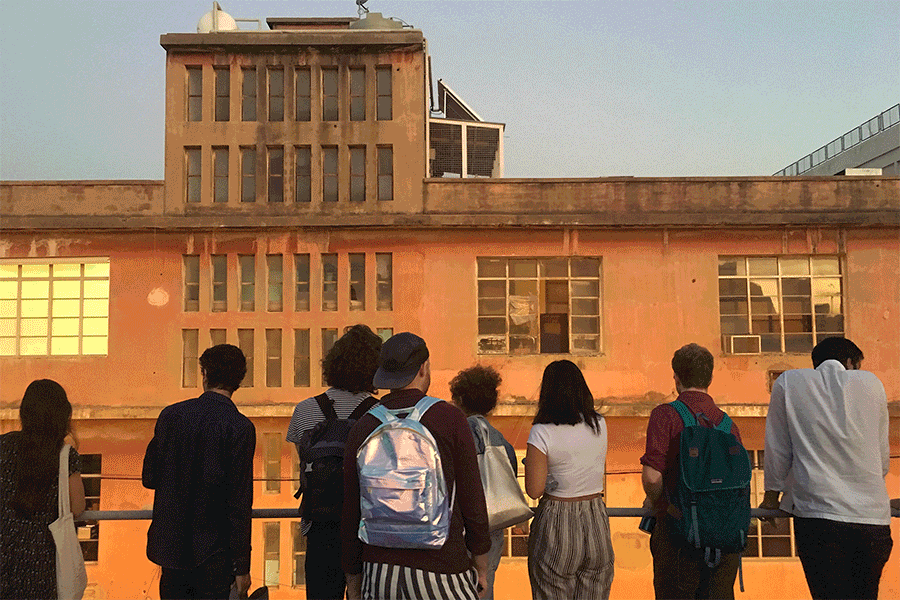Art & Education presents a new School Watch profile of the Home Workspace Program at Ashkal Alwan and the new Classroom program “Mercurial States,” curated by Lucy Cotter.
Navigating Volatility: Home Workspace Program at Ashkal Alwan
By Hicham Awad
“How might an experimental program evolve without replicating what it was designed to circumvent? In a conversation with Sam Thorne about the origins and workings of the Home Workspace Program (HWP), Christine Tohmé, director of host institution Ashkal Alwan, directly addresses what she intended the program to avoid:
The stultifying frameworks, the same old codes of what you need to learn or unlearn, and the set way of doing things in a chronological way. Rather, I see the history of art as a dispersed, volatile structure that can start or happen anywhere. That’s what Home Workspace Program is about.
Tohmé teases, briefly, a set of generative claims and issues about the program. First, there is the comparison with and antagonism toward the ‘academic,’ a common tactic of distinction drawn by independent art programs in relation to their academic counterparts. This difference can resemble a straw-man argument: the purportedly open and interdisciplinary art study program versus methodologically repressive academe. Then, the process of acquiring and overturning knowledge and skill—‘learning’ and ‘unlearning’—which echoes debates in art and architecture education on ‘learning from,’ as well as the resurgence of ‘skilling’ and ‘deskilling’ in artistic circles over the last decade. Then the subject of ‘structure,’ highlighted in Tohmé’s comments on chronology, fixity, and mobility, and centralization and dispersion. Most thought-provoking of all terms invoked, however, is ‘the history of art.’ How does HWP, and its configurations of modes of knowledge, method, and structure, comment on and contribute to the production of art and the writing of its history? Moreover, how can an interdisciplinary arts program with an ever-changing structure strike a balance between a responsive flexibility and a debilitating volatility?” [read more]
School Watch presents distilled perspectives on degree programs in the arts, with interviews, critical texts, and editorial exposés on MFAs, Masters, Doctorates and certificate programs in fine arts, art history, curatorial, cultural and film studies, and other related areas of specialty.
Mercurial States
Curated by Lucy Cotter
“As a child, I once broke a glass thermometer and the mercury it contained flowed into the palm of my hand. I watched the silver river circle my palm with each movement of my wrist and the cupped globule divide into tiny droplets when I probed its surface. Studying its glinting presence, I wondered if it came from the moon. The beauty and power the mercury possessed was bound up with the agility of its transformations. It evoked a sense of unending possibility, a rare quality that I later found again in contemporary art. With time, I could no longer dis-engage art from the immanent toxicity of the art world’s prejudices and exploitation, anymore than I could recover the innocence of my first encounter with mercury. Yet the art world remains for me a place where the wonders of material malleability combine with mercurial states of thought, pointing to the multiplicity of every encounter and the potential reimagining and restructuring of all things.
With this series, I have chosen to share artworks and artists’ lectures that plunge us into material-conceptual intelligence and the potent transformations they draw us toward. To paraphrase Chus Martínez’s definition of ‘aesthetics,’ I want to highlight art’s engagement with ‘the riddle of ambiguity’—‘the constant alteration of the relations between matter and words, time and meaning,’ shifting focus to how art’s intimacy with materiality and media produces new speculations that are often in dynamic relation with, but of a different nature than, academic thought.” [read more]
Featuring videos, interviews, lectures, and performances from Sky Hopinka, Christian Nyampeta, Sarah Rifky, Manuela Infante, Gordon Hall, and Katarina Zdjelar.
Classroom features thematically organized lectures and conversations chosen by artists and thinkers on issues relevant to their practice and contemporary artistic discourse.


